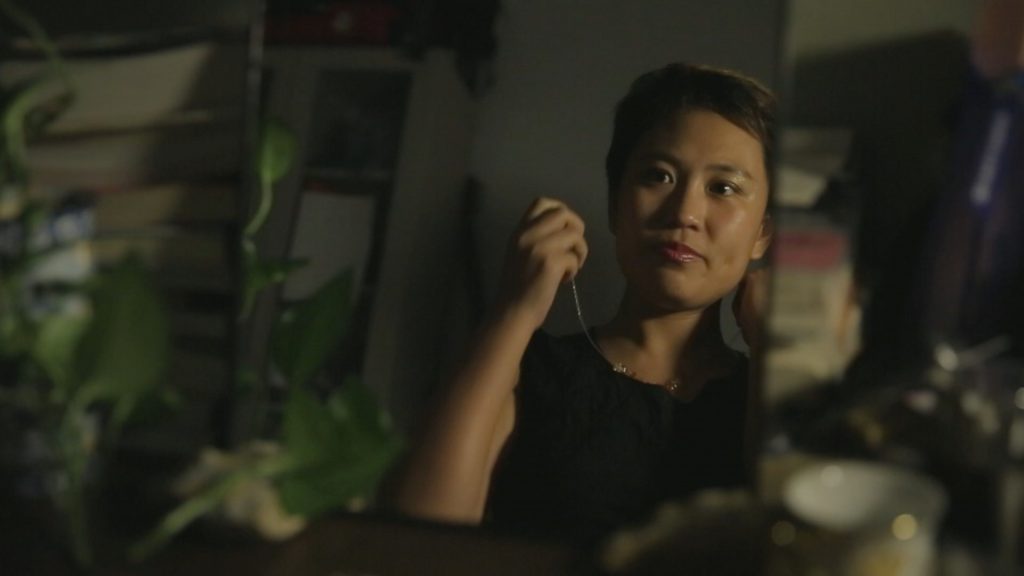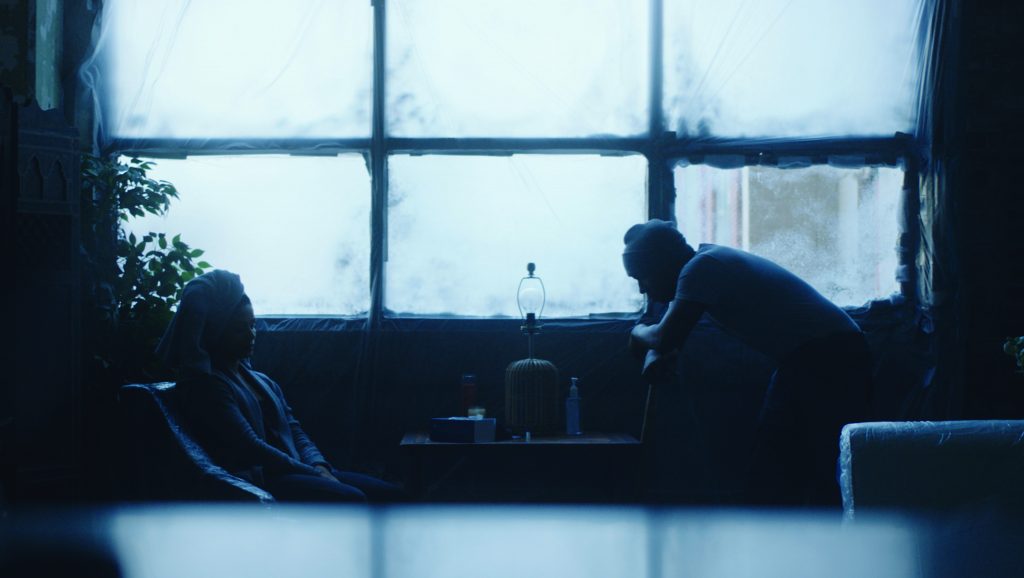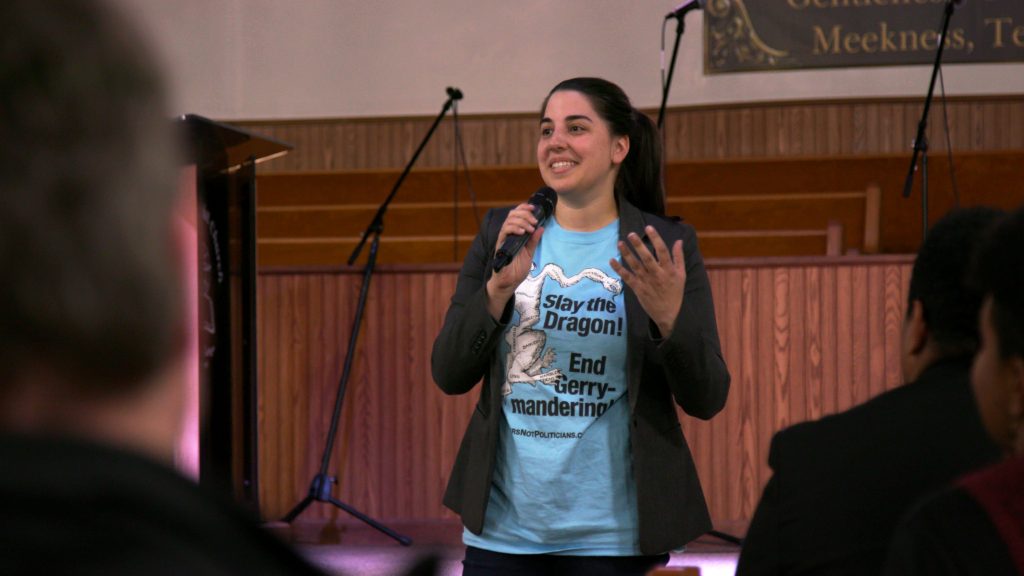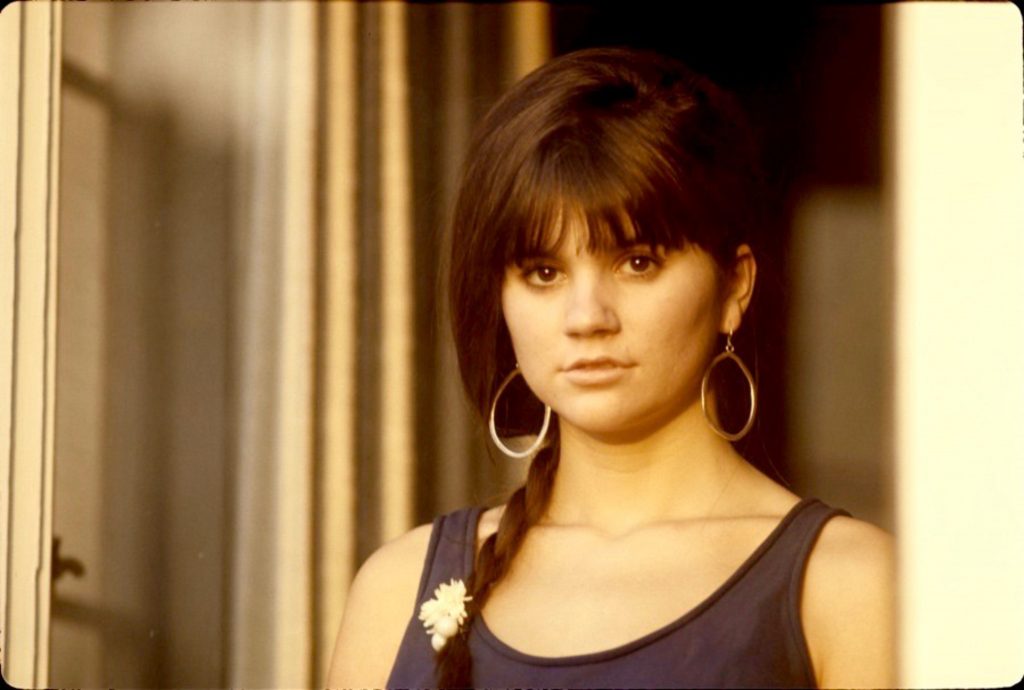April 27, 2019
by Carla Hay

Directed by Shosh Shlam and Hilla Medalia
Mandarin with subtitles
World premiere at the Tribeca Film Festival in New York City on April 27, 2019.
If you know any single women who complain about not being able to find a life partner, or if you know people who think ABC’s reality TV franchise “The Bachelor” is exploitative and sexist toward women, then they should watch the documentary “Leftover Women,” which is a scathing look at the indignities and scorn that single women over a certain age have to endure in China. The movie takes its title from the Chinese phrase “sheng nu,” which translates into “leftover women”—the unflattering term that Chinese people use to describe unmarried, childless women who are near or over the age of 30.
The documentary focuses on three of these women, all of whom have successful careers: Qui Hua Mei, a 34-year-old attorney; Xu Min, a 28-year-old radio employee; and Gai Qui, a 36-year-old assistant professor at Normal University in Beijing. They’re not the type of women to sit around and feel sorry for themselves because they’re single, even when so many people around them try to shame them for not finding a husband yet. (This is a heterosexual-only film, as LGBTQ people are not mentioned in this documentary.)
Hua Mei is the heart and soul of the film. She is easily the most compelling and empathetic person to watch in the movie, whose opening scene is of her in a meeting with a middle-aged female dating coach/matchmaker. The matchmaker, who is smug and cruelly judgmental, proceeds to demean Hua Mei by telling her that she’s too old and not pretty enough to be considered a realistic candidate for marriage. Even though Hua Mei is neither old nor unattractive—and she’s certainly more attractive than the mean-spirited matchmaker who’s written her off as a lost cause—Chinese culture dictates that Hua Mei respect her elders, so she just sits there, nods, and takes the insults as if she deserves to be degraded. It’s excruciating and infuriating watch.
Still, Hua Mei makes an effort to find “the one,” and we see her looking for love in nightclubs, going on awkward dates, and participating in government-sanctioned social events for marriage-minded singles. The documentary also shows that Hua Mei isn’t some sad-sack, desperate spinster: She’s a caring individual who has an emotionally fulfilling life with her friends and career, but it’s impossible for her to escape from the overwhelming disapproval that she gets from Chinese society over her marital status.
The matchmaker isn’t the only person to treat the accomplished and intelligent Hua Mei as a pathetic loser just because she isn’t married. The movie shows that Hua Mei’s own family members, who still live in the rural area where she was raised, are constantly pressuring her to find a husband. It’s clear that Hua Mei has an independent streak and won’t settle for any suitor who comes along. She’s also the most educated person in her family, but her parents think of her as “less accomplished” than her married siblings simply because she isn’t married yet. They also remind Hua Mei that even though they love her, they think she’s an embarrassing burden on her family because she’s not married. And they say this, even though she’s an attorney who’s helped out her family financially because she has the income to do it.
It’s no wonder that Hua Mei is afraid to reveal to the people closest to her that she doesn’t really want to have children. Based on the way her family reacts when she tells them, you’d think that she had just confessed to a horrible crime. When Hua Mei breaks down in tears at her family’s unrelenting criticism, it’s one of the most emotionally difficult moments to watch in the movie. But it also foreshadows a decision that she makes at the end of the film.
Min comes from a well-to-do family who has somewhat spoiled her with material possessions, and she’s somewhat whiny about still being single, but she has other issues that come out during the course of the movie. From a therapy session shown in the film, she reveals that her mother emotionally abused her as a child, by pretending to abandon her as a way of punishment. Min still has not healed from those emotional wounds, and when she has an inevitable argument with her parents about still being unmarried, their response shows that they think they are good parents because they provided her with material comforts all of her life. In another argument, this time when Min is alone with her mother, she confronts her mother about the past abuse, and her mother abruptly ends the conversation and calls Min “ungrateful.”
Qui’s story is the most incongruous, because early on in the movie, she’s shown getting married. The quick courtship that she had with her younger husband is not in the film, but it’s revealed that there’s somewhat of a stigma in their relationship because she makes more money than he does. Of the three women whose stories are told in the movie, Qui is shown the least, so there’s no real sense of her personality, and she doesn’t go through the same struggles as the other two women do in the movie.
It’s no surprise that a patriarchal, sexist culture would place more shame on women than men for being unmarried by a certain age. The older the woman, the more “undesirable” she becomes to society, which is a prejudice that is embedded even in the most “progressive” countries. It goes back to the issue of women, not men, having a biological clock when it comes to conceiving children. Men face their own issues when it comes to how they’re judged as potential spouses. In most societies, a man’s marriage desirability is primarily defined by his wealth/income, followed closely by his physical appearance. In that respect, the United States and other Western countries aren’t much different from China.
These kinds of superficial biases are repeatedly shown in “Leftover Women,” such as a scene with women selecting potential husbands on a dating website and discussing the standards they have for any man they might marry. Several men are automatically rejected based on their looks, height, income or because they live in a rural area. (It’s assumed in Chinese society that people from rural areas are less educated and have less money than those from more urban areas.) Even if it looks like women have more control when they go online to choose whom to date, the documentary shows that when women in China are in serious romantic relationships, they’re expected to let the men be the dominant partners in the relationships. China isn’t the only country in the world to have a society with this mentality, but “Leftover Women” shows that the humiliation and pressure that unmarried women in China have to go through to find a husband make “The Bachelor” look like a feminist paradise.
UPDATE: PBS will premiere “Leftover Women” as part of the “Independent Lens” series on February 10, 2020.









